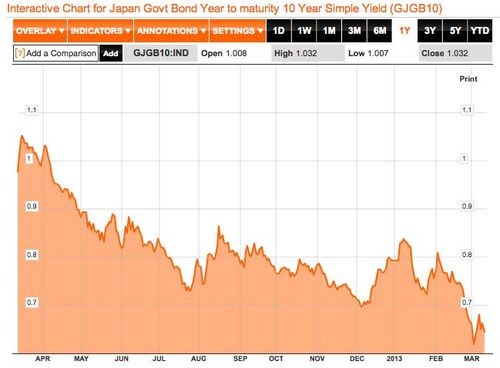Is the Fed Printing Money Real Time Economics
Post on: 6 Август, 2015 No Comment

Is the Federal Reserve printing money to finance its bond buying? Or isnt it? Ben Bernanke has given inconsistent answers, at times saying it is and at times saying it isn’t.
In an exchange with readers on Time magazines website this past weekend, a reader asked Mr. Bernanke why the Fed is creating dollars “out of thin air.” Mr. Bernanke said it wasn’t. “These policies are not leading to increases in the amount of currency in circulation,” he said.
He made a similar argument to CBS Newss Scott Pelley earlier this month in defense of the Fed’s plan to purchase $600 billion of U.S. Treasury bonds with money that the Fed creates. “People talk about the printing press. Thats not what this is about. This policy does not increase the amount of currency in circulation. It does not increase in any significant way the amount of money in broader terms, say, as measured by bank deposits,” he said.
Bloomberg News Fed Chairman Ben Bernanke
Yet back in March 2009 Mr. Bernanke told Mr. Pelley that the Fed was printing money to fund an earlier bond buying program. Its not tax money. The banks have accounts with the Fed, much the same way that you have an account in a commercial bank. So, to lend to a bank, we simply use the computer to mark up the size of the account that they have with the Fed. Its much more akin to printing money than it is to borrowing, he said.
Here is an attempt to sort it out:
The Fed has been buying bonds since early 2009. When a private investor buys bonds, the investor uses cash or sells some existing asset to raise cash and uses that money to buy bonds. The investor might also borrow money from a bank and use the borrowed funds to buy securities on margin. The Fed can do something else. It has the power to electronically credit money to the bank accounts of sellers who in turn sell government securities or mortgage backed securities to the Fed. The banks get the money and the Fed gets the securities. The Fed isn’t literally printing $100 dollar bills when it does this. But it is creating money, electronically, that wasn’t in the financial system before. In that sense, it is printing money.
But as Mr. Bernanke has been trying to emphasize lately perhaps clumsily most of the money that the Fed has created isn’t circulating much through the financial system. It’s mostly sitting idly, often in deposits also known as reserves that banks keep with the Fed itself. Broader measures of the money supply haven’t grown that much because the money isn’t being lent on. Since January 2008, the amount of Federal Reserve notes, i.e. currency, in circulation has increased 18%, to $980 billion. During the same stretch, the reserves banks keep with the Fed has increased more than 30-fold to $995 billion from $33 billion.
Meantime, in the 12 months between November 2009 and November 2010, M2 money supply, a broad measure of money including bank deposits, retail money market fund deposits and other measures of short-term money, are up just 3.3%.
The Fed chairman seems to be trying to emphasize two points: 1) The Fed isn’t literally printing money; and 2) The money that it is creating isn’t flooding through the financial system in a way that would be inflationary.
Mr. Bernanke might be a little sensitive about the first point. Critics have called him “Helicopter Ben” ever since he cited Milton Friedman in a November 2002 speech saying that in a crisis the Fed could flood the economy with money to avoid deflation, as if it were dropping bills from helicopters. Ironically, it was Friedman, not Bernanke, who came up with the helicopter analogy. But Mr. Bernanke is the one who got stuck with the reputation as a serial money dropper.

He’s trying to shoot down the idea by saying, “Hey, I’m not actually printing money.” More broadly, the chairman is trying to dispel the worry that the Fed is sowing the seeds of an inflationary mess by flooding the system with so much cash.
The point is that there’s not as much money out there as you might think. Mr. Bernanke and his colleagues are also confident they can soak it up when needed. One way the Fed plans to do this is by paying banks interest on the reserves they keep with it. It only pays 0.25% now. If the economy heats up, it can increase that rate and keep all of those reserve from being lent too aggressively and overheating the economy. (We’re a long way from that moment.)
Reassuring the public on that point is important because if people begin to expect a lot more inflation, it could become a self-fulfilling prophecy. Unfortunately for the Fed chairman, instead of clarifying, he has confused the issue by failing to flesh out the distinction in more detail.
Follow @WSJecon for economic news and analysis
Follow @WSJCentralBanks for central banking news and analysis
Get WSJ economic analysis delivered to your inbox:














